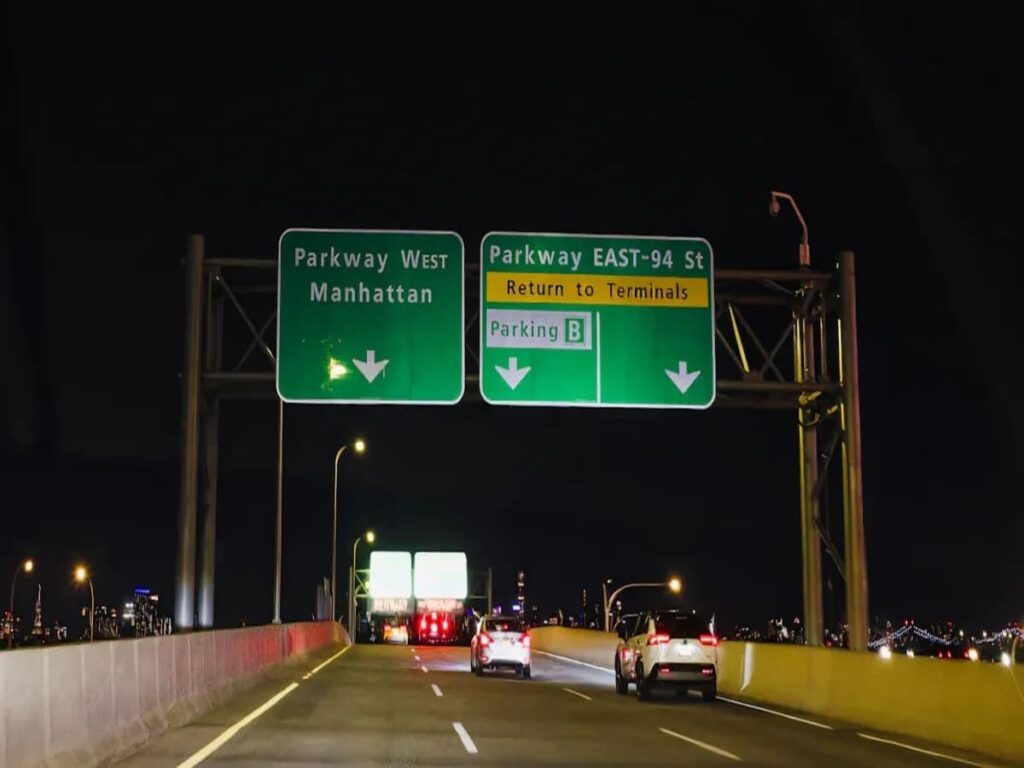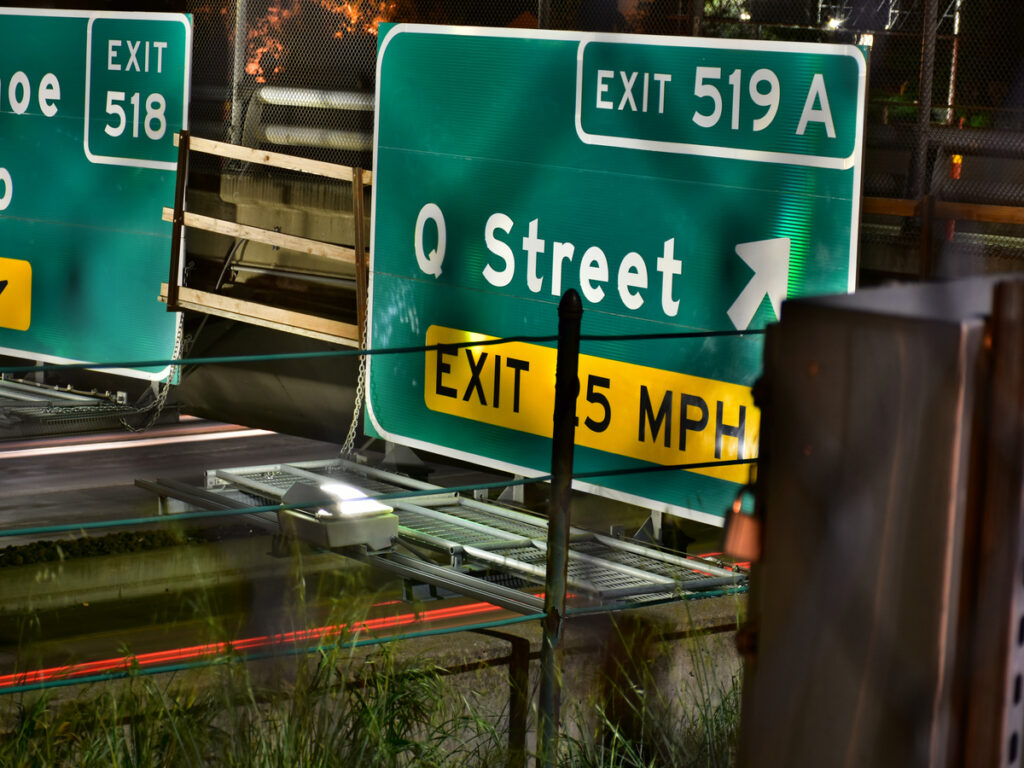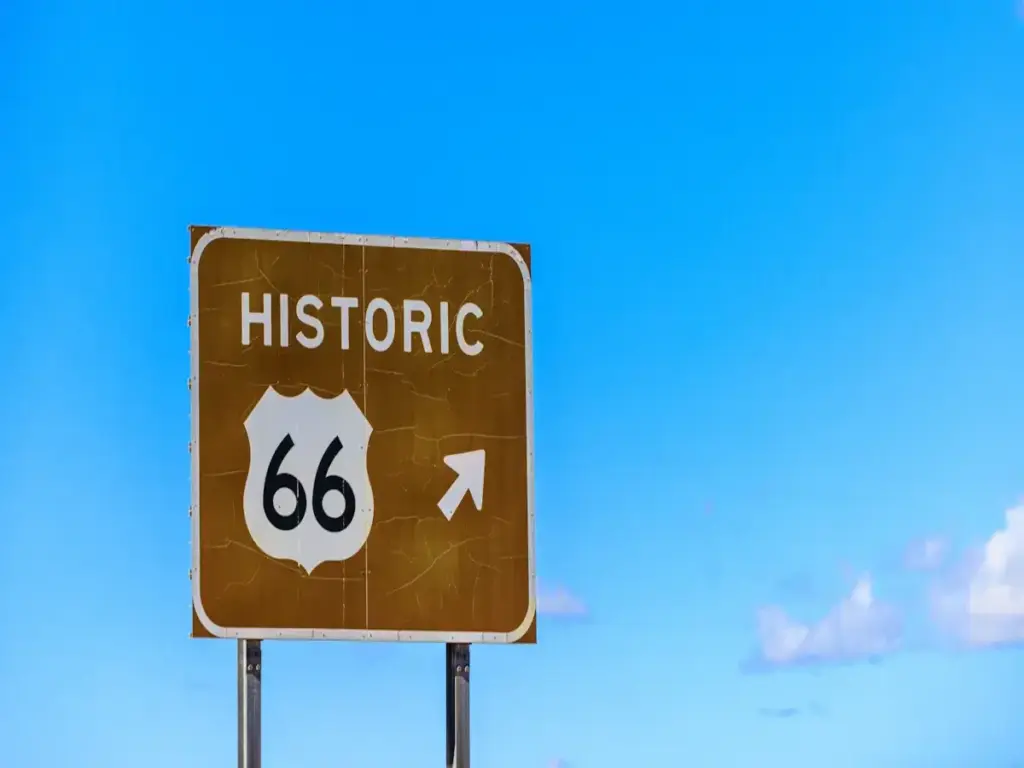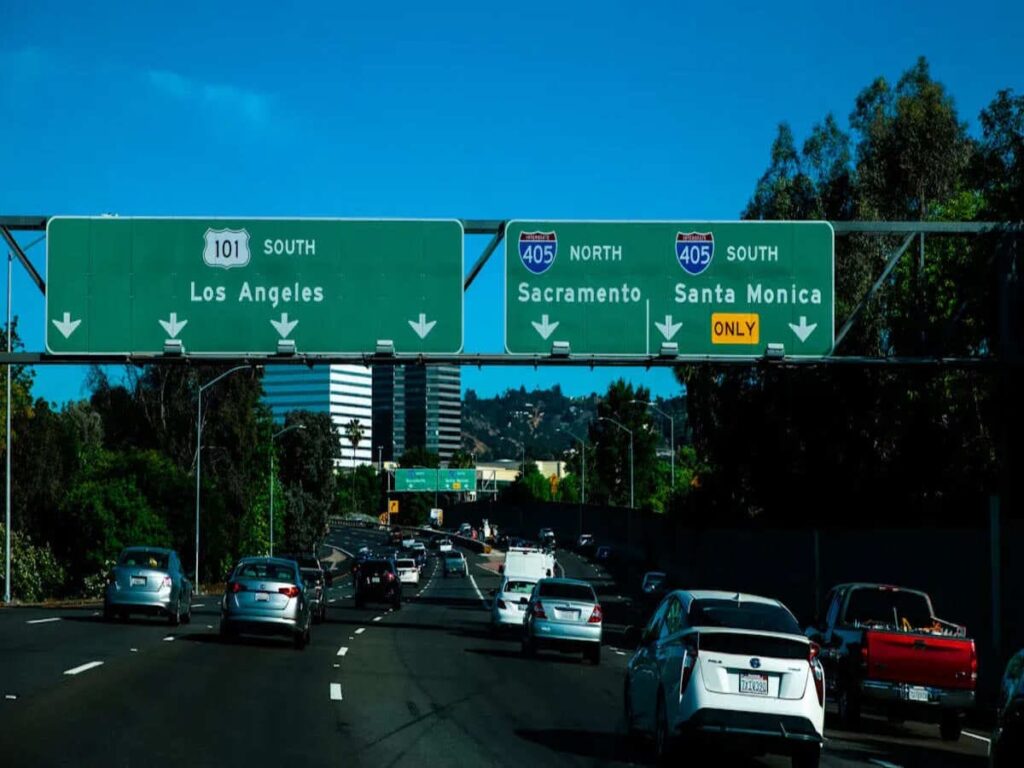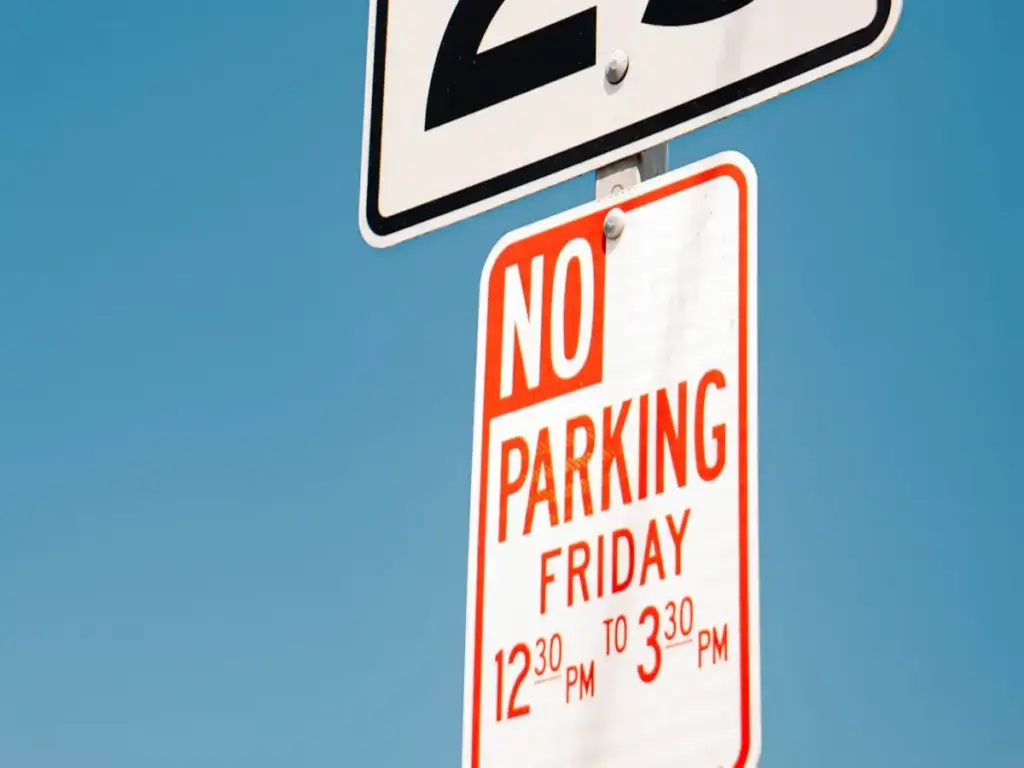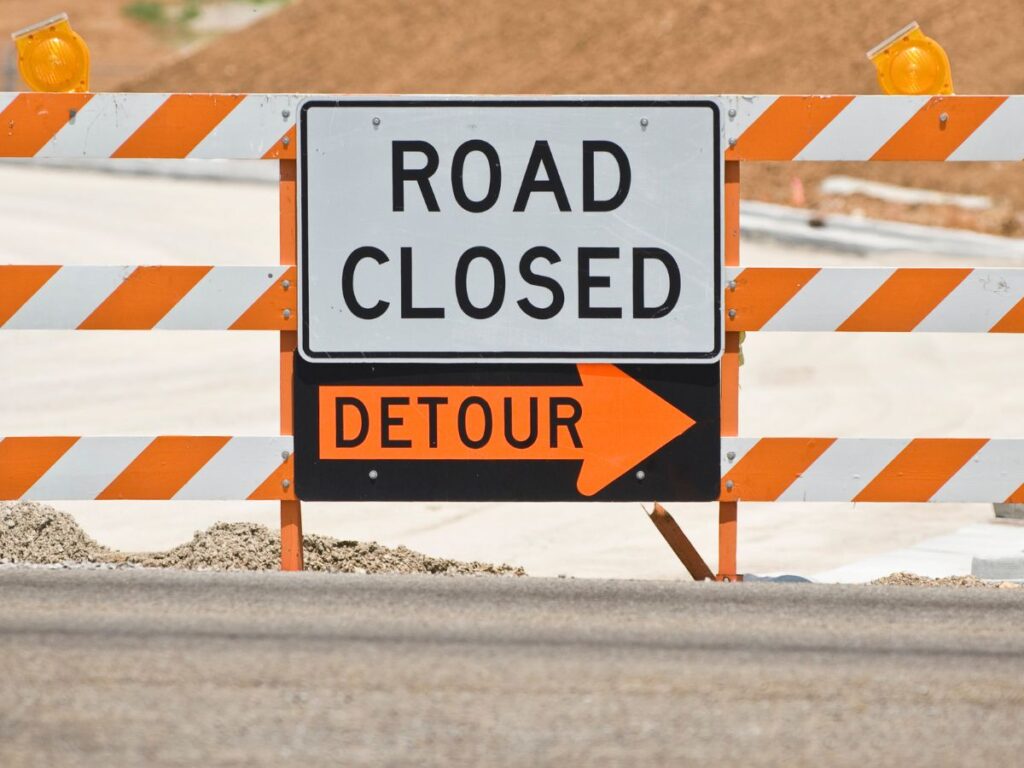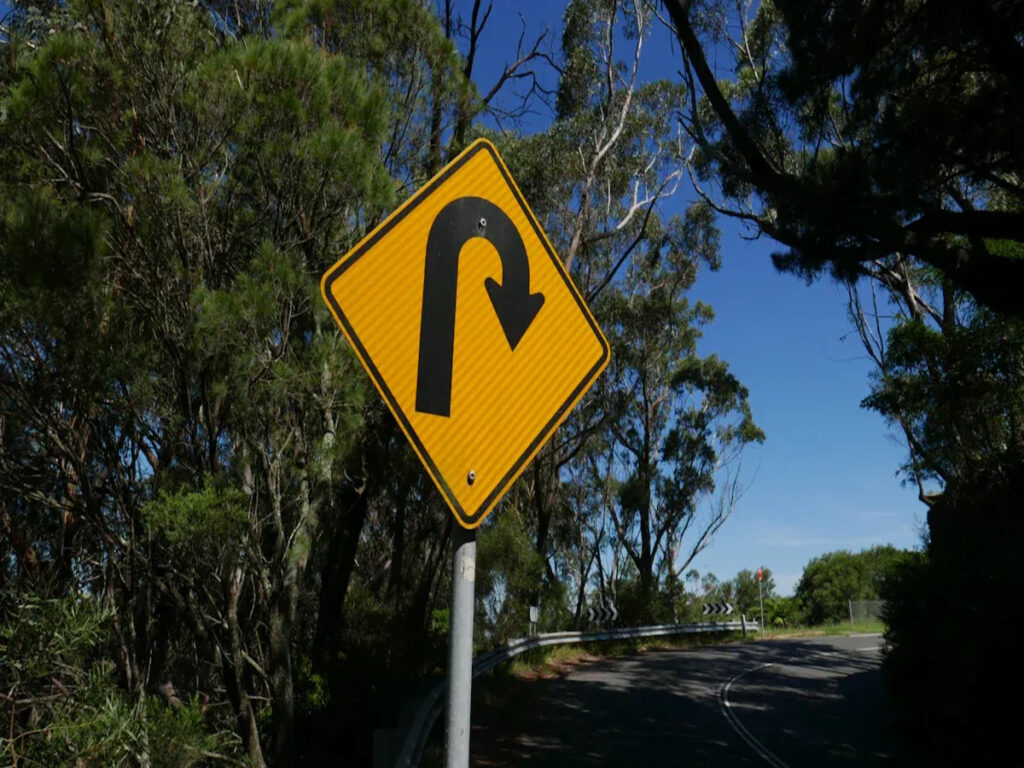
COME 1742 è la guida definitiva per i segnali stradali degli standard australiani, Fornire regole chiare e coerenti per i dispositivi di controllo del traffico in tutta l'Australia. Questo standard specifica elementi essenziali come la forma, colore, lettere, e simboli per garantire l'uniformità a livello nazionale. Standardizzando questi aspetti, COME 1742 Aiuta a ridurre la confusione sulle strade e migliora la sicurezza generale. La ricerca indica che l'adesione a questi segnali stradali degli standard australiani ha contribuito a una diminuzione degli incidenti stradali e a migliorare il rispetto delle leggi sul traffico. Appaltatori, Consigli locali, produttori, E gli esportatori si affidano tutti come 1742 Per svolgere i loro ruoli in modo efficace e mantenere la sicurezza stradale.
Come produttore di fiducia, Optraffic produce pienamente come segnaletica conforme a 1742 progettata per le condizioni australiane. Ogni Segno di sicurezza del traffico è progettato per l'uso del mondo reale, sia sulle autostrade, strade urbane, o zone di lavoro: con un'alta durata, Ottima visibilità, e formattazione accurata. Con tempi di consegna di produzione rapidi e consegna sfusa affidabile, Aiutiamo i clienti a rispettare le scadenze del progetto e a garantire la conformità senza compromessi.
COME 1742 e segnali stradali degli standard australiani
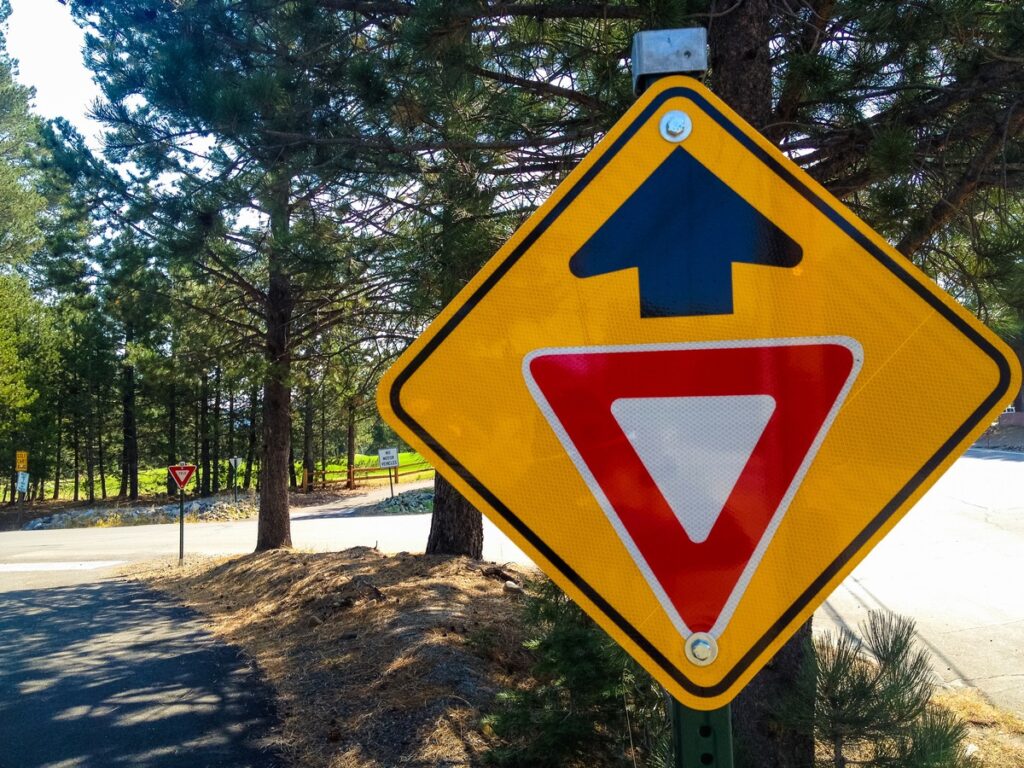
Cos'è come 1742?
COME 1742 è chiamato manuale dei dispositivi di controllo del traffico uniformi. È la guida principale per i segnali stradali degli standard australiani. Questo manuale fornisce le regole per la creazione e l'utilizzo dei dispositivi di controllo del traffico in Australia. Si assicura che i segnali stradali, Segnali, E i segni sembrano uguali ovunque. Questo aiuta a rendere le strade più sicure e più facili da usare per tutti.
COME 1742 è diverso dagli altri standard. Si adatta alla guida australiana e alle abitudini locali. Il manuale utilizza forme e colori speciali per ogni segno. I segnali di avvertimento sono diamanti gialli con simboli neri. I segni normativi hanno cerchi rossi attorno ai limiti di velocità. L'as 1744 Il carattere aiuta i conducenti a leggere i segni rapidamente. Questo è importante quando si guida velocemente. Il manuale utilizza anche unità metriche come chilometri all'ora. Questo corrisponde alle regole sulle strade australiane.
Il manuale dei dispositivi di controllo del traffico uniforme ha alcune funzionalità speciali. Usa parole locali come "cedere’ invece di "resa.’ I segni della zona scolastica hanno spesso luci lampeggianti per avvertire i conducenti. I segnali di avvertimento temporanei sono rettangoli con sfondi gialli o arancioni. Questi sembrano diversi dai segni britannici. Il manuale mescola idee dal Stati Uniti e Europa. Ma li cambia per le strade australiane, tempo atmosferico, e terra. Usa più simboli che parole. Questo aiuta i conducenti internazionali a capire i segni. A volte, Le parole vengono aggiunte per ulteriore aiuto.
COME 1742 Copre i segnali stradali più comuni. Questi includono la regolamentazione, avvertimento, guida, e segni temporanei. Dice quali colori, forme, e dimensioni che ogni segno dovrebbe avere. Il manuale si collega anche ad altre parti della serie di traffico degli standard australiani. COME 1743 spiega i materiali e come mettere i segni. AS/NZS 1906 Parla della riflettività per vedere i segni di notte. Questo sistema fa una solida base legale per i dispositivi di controllo del traffico in Australia.
Nota: Appaltatori e consigli devono lavorare insieme per utilizzare come 1742 in luoghi diversi. Si trovano ad affrontare problemi che soddisfano le esigenze locali. Questo è difficile nelle aree con molte culture e condizioni stradali speciali. I modi flessibili ed eque aiutano a garantire che gli standard australiani dei segnali stradali funzionino per tutti gli utenti della strada.
Perché i segnali stradali uniformi contano
Avere gli stessi segnali stradali australiani è molto importante per la sicurezza e seguire la legge. Quando tutti i segnali stradali seguono le stesse regole, I conducenti sanno cosa aspettarsi. Questo è vero, non importa dove vanno in Australia. Aiuta a fermare la confusione e gli errori sulla strada.
La tabella seguente mostra come i dispositivi di controllo del traffico uniformi aiutano la sicurezza e la legge:
| Aspetto delle prove | Descrizione |
|---|---|
| Standard nazionali | Regole rigorose per le dimensioni, forma, posizionamento, e la riflettività aiuta le persone a vedere i segni e seguire la legge. |
| Impatto di sicurezza | Più grande, Segnali chiari più bassi rischi per incidenti fino a 30%. Aiutano anche i tribunali a mantenere le multe. |
| Riflettività | Segni riflettenti in basso arotti notturni 6%. |
| Conformità legale | I segni che non seguono le regole possono essere illegali e le multe potrebbero non contare. |
| Caso di studio | I segni di Chevron più grandi hanno aiutato i conducenti a trasformare in sicurezza e hanno abbassato gli incidenti. |
| Adattamento ambientale | Segni più grandi vengono utilizzati su strade veloci o difficili in modo che i conducenti possano vederli meglio. |
| Manutenzione | Il controllo dei segnali spesso li rende facili da vedere e legali. |
Gli studi in Australia lo mostrano fino a 80% dei conducenti rallentano dopo aver visto segnali di velocità radar. Le velocità medie scendono 10% A 20%. In alcuni luoghi, Le morti sulla strada sono diminuite tanto quanto 79% Dopo essere iniziati nuovi segnali e controlli di velocità. Luminoso, I segni riflettenti hanno portato a 25% meno incidenti rispetto ai vecchi segni. Questi fatti mostrano perché i dispositivi di controllo del traffico standard sono importanti per la sicurezza stradale.
I segnali stradali uniformi degli standard australiani aiutano anche a seguire la legge. I segni che non soddisfano le regole potrebbero non contare in tribunale. Questo può significare che le multe vengono annullate e i conducenti si confondono. Usando il manuale dei dispositivi di controllo del traffico uniformi, Le autorità fanno regole chiare. Queste regole proteggono tutti sulla strada.
I segnali stradali degli standard australiani devono funzionare in molti luoghi. Questi includono città trafficate e strade di campagna tranquilla. Le persone devono cambiare i loro piani per soddisfare le esigenze locali, tempo atmosferico, e terra. Devono anche pensare alla cultura, Soprattutto nelle aree aborigene e dello Stretto di Torres. La pianificazione e parlare equa e parlare con le persone aiutano a garantire che i dispositivi di controllo del traffico funzionino bene per tutti.
Mancia: Controllare e fissare i segnali stradali spesso li mantiene chiari e facili da vedere. Questo aiuta a mantenere le strade al sicuro e supporta la legge.
Struttura dell'AS 1742 Serie
Panoramica delle parti 1–22
L'as 1742 La serie parla di molte cose per i segnali stradali. Ogni parte ha il suo argomento. COME 1742.1 fornisce le regole principali per l'utilizzo dei segnali stradali, Segnali, e segni. Questa parte aiuta le persone a scegliere il segno giusto per ogni luogo. COME 1742.2 riguarda i segni normativi come i limiti di velocità e nessuna voce. COME 1742.3 è per i segnali di gestione del traffico temporanei. Questi vengono utilizzati quando le strade vengono fissate o costruite. COME 1742.4 delinea l'uso di segnali di avvertimento per avvisare i conducenti di potenziali pericoli da percorrere, Mentre COME 1742.5 attraverso come 1742.10 segni di guida degli indirizzi, marcatori di percorso, e segnaletica destinata a ciclisti e pedoni. I controlli di parcheggio sono coperti in dettaglio sotto AS 1742.11. Le parti successive parlano delle zone scolastiche, Attraversamenti ferroviari, e altri luoghi speciali.
Nuove modifiche a come 1742.1 avere regole più chiare per dove mettere i segni. Ci sono anche nuove regole per l'utilizzo di materiali riflettenti. Questi cambiamenti aiutano le persone a vedere meglio i segnali stradali. Consigli e lavoratori ora controllano i segnali più spesso. Usano materiali migliori per mantenere tutti al sicuro.
Applicazione in urbano, Rurale, e zone di costruzione su strada
COME 1742.1 è usato in molti luoghi. Nelle città, I segnali stradali aiutano con il traffico impegnato e mostrano alle persone dove andare. I segnali normativi e di avvertimento mantengono i conducenti al sicuro negli incroci occupati. In campagna, Segni più grandi avvertono di curve o animali acuti. Le zone di costruzione di strade utilizzano segni di gestione del traffico temporanei da AS 1742.3. Questi segni dicono ai conducenti i cambiamenti e aiutano a proteggere i lavoratori.
I segni di gestione del traffico temporanei sono molto importanti durante il lavoro su strada. I lavoratori mettono questi segni prima e dopo l'area di lavoro. Questo aiuta i conducenti a rallentare e seguire nuovi percorsi. COME 1742.1 dà passi chiari per dove mettere i segni e quanto dovrebbero essere in alto. Controlli di parcheggio da AS 1742.11 aiutare a gestire lo spazio nelle città e nelle scuole vicine. Ogni parte di come 1742.1 si assicura che i segnali stradali si adattano a luoghi e bisogni diversi.
Mancia: I consigli dovrebbero guardare al più nuovo come 1742.1 modifiche prima di iniziare un nuovo lavoro. Questo si assicura che tutti i segnali stradali siano legali e facili da vedere.
Uso pratico dei segnali stradali
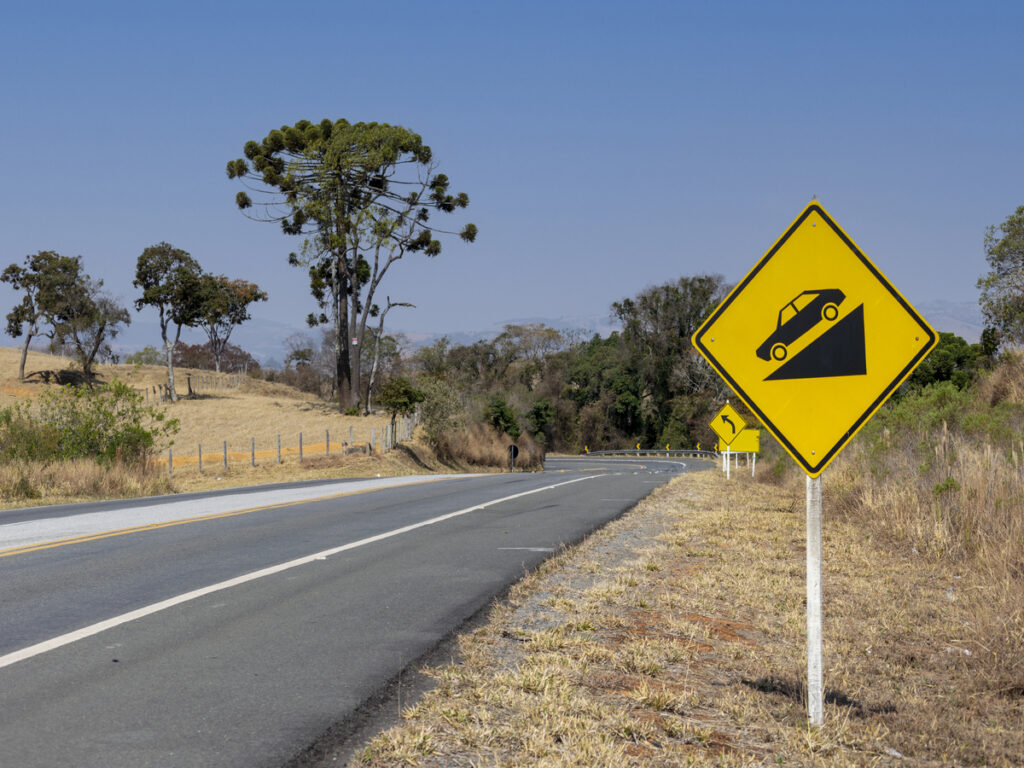
Segnale permanente e temporanea
Segni stradali permanenti guidatori di guida ogni giorno. Questi segnali stradali includono limiti di velocità, Segnali di stop, e marcatori di direzione. I consigli usano come 1742.1 Per scegliere la dimensione giusta, colore, e forma per ogni segno. Questo aiuta i driver a capire rapidamente il messaggio. I segni permanenti rimangono in un posto per molti anni. Usano materiali forti per durare con tutti i clima.
I segni di gestione del traffico temporanei aiutano durante eventi speciali o modifiche a breve termine. I lavoratori usano questi segni quando le strade si chiudono per riparazioni o sfilate. I segni hanno spesso colori vivaci e simboli chiari. COME 1742.1 dà regole per questi segni in modo che i conducenti possano vederli facilmente. I segni temporanei devono essere rimossi al termine dell'evento. Questo mantiene la strada chiara e sicura.
Per i concili, appaltatori, e gestori di eventi che necessitano Segnaletica stradale permanente o temporanea conforme AS 1742, OpTraffic fornisce tempi rapidi, soluzioni di fornitura all'ingrosso su misura per gli standard australiani, aiutando i progetti a rimanere al sicuro, compiacente, e nei tempi previsti.
Zone di costruzione stradale
Le zone di costruzione su strada hanno bisogno di cure speciali. COME 1742.1 e altre parti di come 1742 Stabilisci regole per queste aree. I lavoratori usano segnali di avvertimento per avvisare i conducenti sui pericoli da percorrere. Questi segni sono diamanti arancioni. In aree ad alta velocità, I lavoratori li collocano 200 A 250 metri prima del pericolo. Nelle città, usano 50 A 100 metri. I segni normativi mostrano nuovi limiti di velocità. Questi segni si avvicinano a dove inizia la regola.
I segnali stradali informativi aiutano i conducenti a trovare deviazioni e a sapere quanto durerà il lavoro. I lavoratori usano anche coni, barriere, e luci lampeggianti. Questi strumenti rendono l'area più sicura per tutti. Il codice del traffico stradale 2000 e le leggi sulla sicurezza supportano queste regole. COME 1742.1 spiega quanto in alto posizionare ogni segno e quale post utilizzare. Questo assicura che i conducenti vedessero chiaramente i segni.
Esempio di applicazione:
Ad esempio, OPTRAFFIC ha recentemente fornito segnaletica conforme AS per un importante progetto di lavori stradali a Melbourne. Il posizionamento di chiari segnali di avvertimento e di regolamentazione prima della zona di costruzione, accoppiato con posizionato strategicamente coni E luci lampeggianti, ha contribuito ad a 30% riduzione degli incidenti legati al traffico durante il periodo di costruzione. Questo approccio proattivo non ha aderito solo ad AS 1742 norme ma hanno anche garantito la sicurezza dei conducenti e un flusso regolare del traffico attraverso la trafficata zona di lavoro.
Aderendo all'AS 1742 e sostenere le norme sulla sicurezza stradale, Gli appaltatori e i comuni possono migliorare la sicurezza delle zone di costruzione stradali mantenendo il rispetto degli standard australiani.
Hai bisogno di segnali stradali per la tua zona di costruzione?
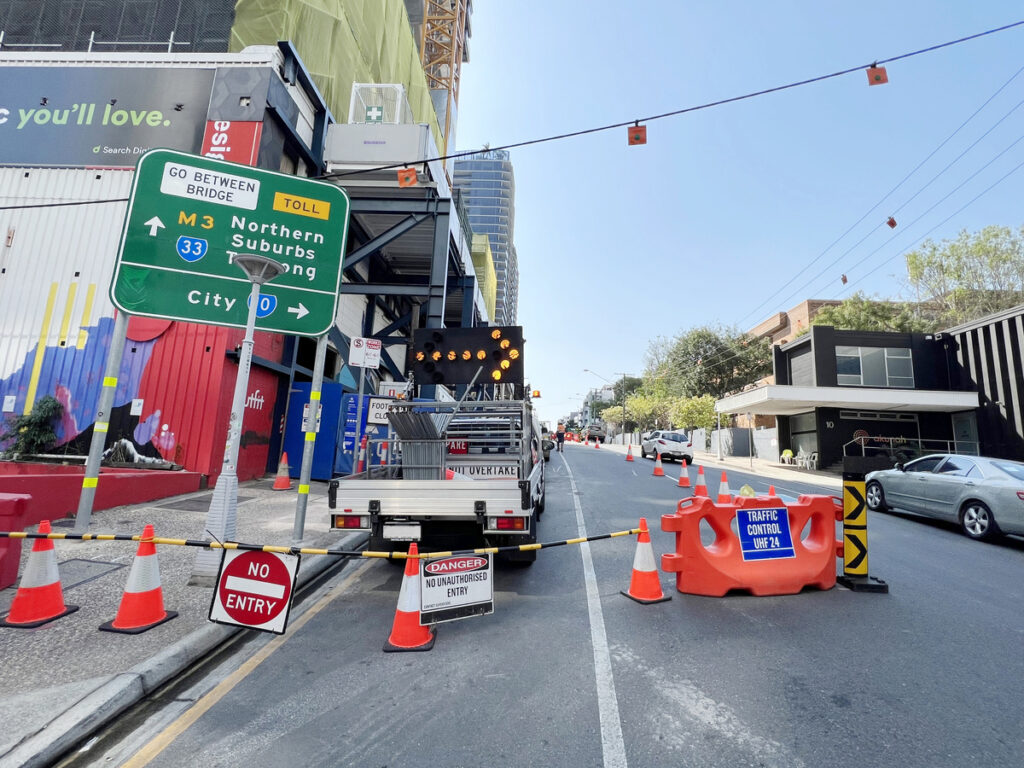
OpTraffic offre una gamma completa di Come segnali stradali conformi al 1742 e soluzioni per la sicurezza del traffico su misura per le zone di costruzione, autostrade, e aree urbane. Contattaci oggi Per discutere le tue esigenze e garantire la sicurezza e la conformità al tuo prossimo progetto.
Parcheggio e zone scolastiche
Le aree di parcheggio e le zone scolastiche hanno i loro bisogni. COME 1742.1 e come 1742.11 Consigli guida su come controllare il parcheggio. Nelle città, I segnali di parcheggio mostrano dove i conducenti possono fermarsi e per quanto tempo. Questi segni usano tempi e simboli chiari. I consigli controllano spesso questi segni per tenerli aggiornati.
Le zone scolastiche utilizzano segnali di avvertimento speciali. Questi segni dicono ai conducenti di rallentare quando i bambini sono vicini. Alcuni segnali scolastici hanno luci lampeggianti durante i tempi intensi. COME 1742.1 dà le regole per questi segni. Questo aiuta a proteggere i bambini e continua a muoversi in sicurezza.
Nota: Consigli e lavoratori dovrebbero sempre seguire come 1742.1 Per ogni tipo di cartello stradale. Questo mantiene le strade al sicuro e aiuta tutti a capire le regole.
Standard australiani correlati
COME 1743 e standard di segno
COME 1743 Funziona con AS 1742 Per impostare le regole per i segnali stradali. Questi standard dei segni dicono quali materiali e forme usa. Raccontano anche come fare i segni. Consigli e appaltatori usano come 1743 per scegliere materiali forti. In alluminio e acciaio zincato durano tempo duro. Gli standard dei segni includono anche:
- Codici di dimensioni da A a D Match Sign Dimensione alla velocità e al luogo della strada.
- Forme speciali, come gli ottagoni per stop e triangoli per cedere, Aiuta i conducenti a individuarli velocemente.
- Le regole per i fogli riflessivi rendono i segni facili da vedere di notte.
- Controlli regolari assicurano che i segni rimangono forti e chiari.
Le autorità locali controllano tutti i segnali prima di metterli su. I segni temporanei devono seguire come 1742.3 per mantenere tutti al sicuro durante le opere stradali.
AS/NZS 1906 e Riflettività
AS/NZS 1906 fornisce le regole per materiali riflessivi sui segnali stradali. La retroreflettività aiuta i conducenti a vedere i segni di notte o in caso di maltempo. Funziona rimbalzando i fari di nuovo al conducente. Lo standard elenca diverse classi di fogli riflettenti. Ogni classe ha il suo lavoro:
| Classe riflessiva | Descrizione | Utilizzare sui segnali di stop |
|---|---|---|
| Classe 1 | Tallone prismatico o vetro ad alta intensità | Obbligatorio per strade pubbliche |
| Classe 1W | Prismatico ad angolo largo | Utilizzato per una luminosità extra |
| Classe 2 | Riflettività più bassa | Non consentito per i segnali di stop |
I segnali di stop devono usare la classe 1 o fogli di classe 1W. Questo li rende luminosi e facili da vedere. Più forte, I materiali più luminosi aiutano i conducenti a reagire rapidamente e incidenti più bassi. La pulizia e il controllo dei segnali li mantengono spesso luminosi e sicuri.
Integrazione per la conformità
Per seguire le regole, Le persone devono usare come 1742, COME 1743, e AS/NZS 1906 insieme. COME 1742 imposta le regole per la dimensione, colore, e dove mettere i segni. COME 1743 Fornisce dettagli su quanto dai segni di montaggio. Dice 1.5 metri nel paese e 2.1 metri nelle città. AS/NZS 1906 si assicura che venga utilizzata la giusta classe riflettente. Quando vengono seguite queste regole, I segni sono legali, chiaro, e sicuro. I consigli devono anche verificare che gli alberi o altre cose non bloccino i segni. Da questa parte, Le strade rimangono al sicuro e la legge è seguita.
Mancia: Controlla sempre gli nuovi standard di segni prima di mettere nuovi segni. Questo aiuta a mantenere tutti al sicuro e segue le regole per molto tempo.
Conformità e errori comuni
Garantire gli standard dei segni
Seguendo i segnali stradali degli standard australiani mantengono le strade sicure e legali. I consigli e gli appaltatori utilizzano passaggi chiari per controllare i segnali. Ricevono grafici di dimensioni e riflettività dai fornitori prima di acquistare segnali. Ogni segno deve mostrare come come 1742 Codice e dimensione dell'etichetta sul retro. I lavoratori si assicurano Il segno ha la dimensione giusta e riflettività per il suo lavoro, Come i segnali normativi o di avvertimento.
Guardano anche il codice della serie di segni, dimensioni in millimetri, E quanto è luminoso. Regole del Consiglio locale e le ultime come 1742 I documenti aiutano con questi controlli. Alcuni posti richiedono segni più grandi o più luminosi. I fornitori devono fornire tutti i dettagli e i grafici per dimostrare che i segni sono corretti. Prima di mettere i segni, I team li controllano e mostrano prove alle autorità locali. Questo assicura che i segni seguino il codice del traffico stradale 2000 E mantieni tutti al sicuro.
Mancia: I consigli dovrebbero leggere integratori specifici dello stato e note tecniche. Questo li aiuta a rimanere aggiornati con le modifiche al codice del traffico stradale 2000.
Evitare errori comuni
Gli errori nel mettere i segnali stradali possono causare confusione e pericolo. L'uso di progetti di altri paesi può fare problemi. I lavoratori dovrebbero utilizzare modelli approvati e progetti standard da AS 1742.3. Questo mantiene i segni chiari e gli stessi ovunque. Controlli regolari aiutano a trovare danni, sbiadimento, o posizionamento sbagliato. Buoni materiali riflettenti e resistenti alle intemperie, come lamiera di grado diamantato, Aiuta le persone a vedere i segni e ad soddisfare le regole.
I segni devono essere distanziati e posizionati correttamente. Devono essere facili da vedere e abbastanza lontano dagli incroci. Questo dà ai conducenti il tempo di reagire. Gli alberi o le auto parcheggiate non devono bloccare i cartelli. I team devono seguire l'ultimo codice del traffico stradale 2000 regole. Non dovrebbero mescolare stili o utilizzare segni che non sono approvati. Controllare e fissare i segni spesso li mantiene chiari e legali.
La tabella seguente mostra come l'aggiornamento dei vecchi segni aiuta con sicurezza e seguendo le regole:
| Aspetto | Prima dell'aggiornamento | Dopo l'aggiornamento |
|---|---|---|
| Riflettività | Difficile da vedere di notte | Facile da vedere in qualsiasi momento, si incontra come/nzs 1906.1 |
| Chiarezza del messaggio | Troppe parole, confuso | Chiaro, semplice, e informazioni importanti |
| Durabilità | Danneggiato dal maltempo | Forte, Materiali e design resistenti alle intemperie |
| Coerenza del design | Caratteri diversi, colori, simboli | Stessi caratteri, colori, e simboli su tutti i segni |
Nota: Verificare e fissare i segnali spesso aiuta i consigli e gli appaltatori a evitare errori. Questo mantiene i segnali che seguono il codice del traffico stradale 2000.
COME 1742 è la guida principale per i segnali stradali degli standard australiani. Aiuta a mantenere le strade al sicuro dando regole a consigli e lavoratori. Seguire come 1742 ha molti buoni punti. Dà sicurezza legale, Aiuta le persone a fidarsi del tuo lavoro, e rende le strade più sicure. Le persone dovrebbero guardare le guide ufficiali e chiedere aiuto agli esperti. Questo li aiuta a conoscere nuovi cambiamenti e mantenere il loro lavoro ad alto livello.
Domande frequenti
Qual è lo scopo principale di come 1742?
COME 1742 Fornisce regole chiare per i segnali stradali in Australia, Garantire l'uniformità in tutta la nazione. Aiuta tutti gli utenti della strada a comprendere rapidamente i segnali stradali, Il che è cruciale per la sicurezza stradale. Secondo Standard Australia, Questa uniformità ha contribuito a una riduzione misurabile degli incidenti e a migliorare la conformità alle normative sul traffico.
Chi deve seguire come 1742 standard?
Consigli, appaltatori stradali, Firma dei produttori, e gli esportatori devono seguire come 1742. Per esempio, Molti consigli locali in tutta l'Australia richiedono Come segnali stradali conformi al 1742 nei loro progetti urbani, Garantire coerenza e prevenire costose rielaborazioni. Gli appaltatori si affidano a questi standard per soddisfare i requisiti legali mantenendo la sicurezza stradale.
Quante volte dovrebbe essere controllata i segnali stradali per la conformità?
Consigli e appaltatori dovrebbe ispezionare regolarmente Come segnali stradali conformi al 1742 per danni, sbiadimento, o blocchi. Routine manutenzione dei segni del traffico lo garantisce Segni di sicurezza stradale Rimani visibile e continua a prevenire gli incidenti. Secondo studi recenti, Segni stradali ben mantenuti ridurre gli incidenti fino a 25%, evidenziando l'importanza di mantenere dispositivi di controllo del traffico in ottime condizioni.
I segni di altri paesi possono essere utilizzati in Australia?
NO, I segni di altri paesi non si incontrano COME 1742 standard. Soltanto Come segnali stradali conformi al 1742 sono legalmente riconosciuti in Australia. L'uso di segni non conformi può portare alla confusione, sfide legali, e rischi per la sicurezza. Per appaltatori e consigli, collaborando con un fidato Produttore di segni stradali come Optraffic assicura che rimangono pienamente conformi, Evitare ritardi inutili e garantire la sicurezza stradale.

